Saddle leather is beautiful, but it can be too light for some projects. If you want to darken saddle leather, you can do a few things. In this article, we’ll show you three methods on how to darken saddle leather. Choose the one that works best for your project. Keep reading!
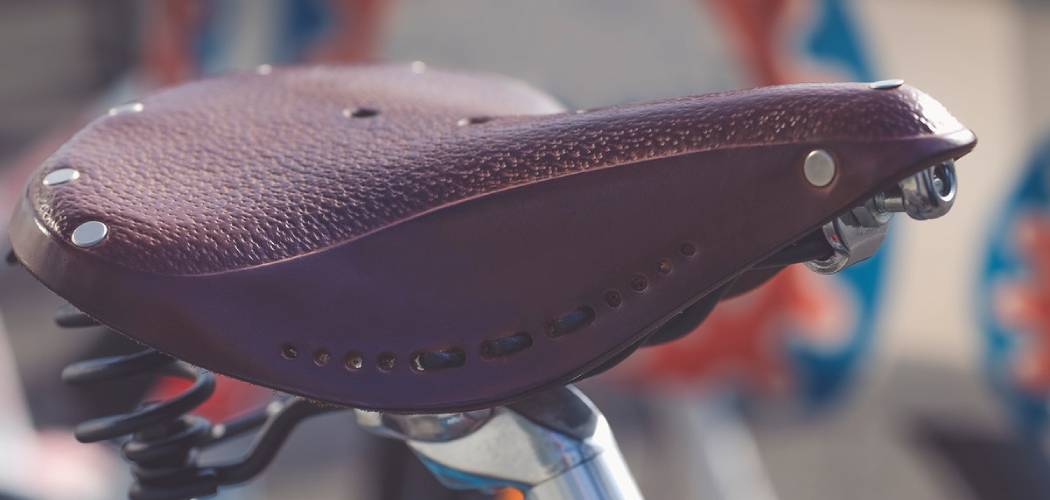
Darkening saddle leather is a great way to give it a more rustic look. Unfortunately, it’s also just the thing for distressing dark leather, bringing out the lighter tones of the material to create contrast. How you change your saddle color depends on what type of project. For example, if you’re dying 2-3 oz vegetable tanned English bridle leather, you’ll be using very different techniques than if you were dyeing 4-5 oz latigo cowhide.
Before Darkening Leather
Before you can start to darken your saddle leather, you need to prepare the leather. Generally, most vegetable tanned leathers are neutral or slightly russet. You can see this color when you first open a hide.
Things You’ll Need:
- Stiff bristle brush
- Mild Dish Soap or Leather Cleaner
- Microfiber Cloths
- Soft cotton cloths
- Paper Towels or Rags
- Rubber gloves
Step 1:
When you first receive your hides, start by giving them a good dusting with a stiff bristle brush. This will eliminate any loose dirt or debris that might have found its way into the package.
Step 2:
Clean the Hides Once the leather is dusted, prepare a soft cotton cloth with a small amount of mild dish soap or leather cleaner. Rub the hide down with the soapy rag from top to bottom and from side to side in long even strokes. Don’t forget to do both sides! Also, pay special attention to areas where there may be an oily/greasy buildup, such as on seams and underbellies. Again, a little pressure with your cleaning cloth can make the difference here; don’t be shy.
Step 3:
Dry the Hides Once you’ve washed a section, rinse your cloth and thoroughly wipe off any remaining soap before moving to the next area. Finally, use a clean cotton cloth or paper towels to blot all excess moisture from the hide. Use long, soft strokes from top to bottom and side to side again. Rubber gloves are optional but highly recommended for this step! Too much water can make your leather stiffer than it should be, so don’t overdo it here either!
How to Darken Saddle Leather Detailed Guide
Method 1: Using Oil to Darken Saddle Leather
Leather oils are now very popular as a method of feeding and nourishing leather. You can buy various oils to darken the color, but you should be warned that oil will not create an even dye job on your saddle leather.
Things You’ll Need:
- Leather Oil; You can use mink oil or coconut oil
- Rags
- Paper Towels
Step 1: Apply the oil
Apply a liberal amount of oil to the leather and work it in with your hands, ensuring that you spread it evenly over the entire surface. Place some paper towels under your leather as you do this to catch any drips or spills. Allow the oil time to soak into the leather. How quickly it absorbs will depend on how thick and dry (or wet) the leather is. How much time you’ll need to wait also depends on what kind of oil you use and what color you want.
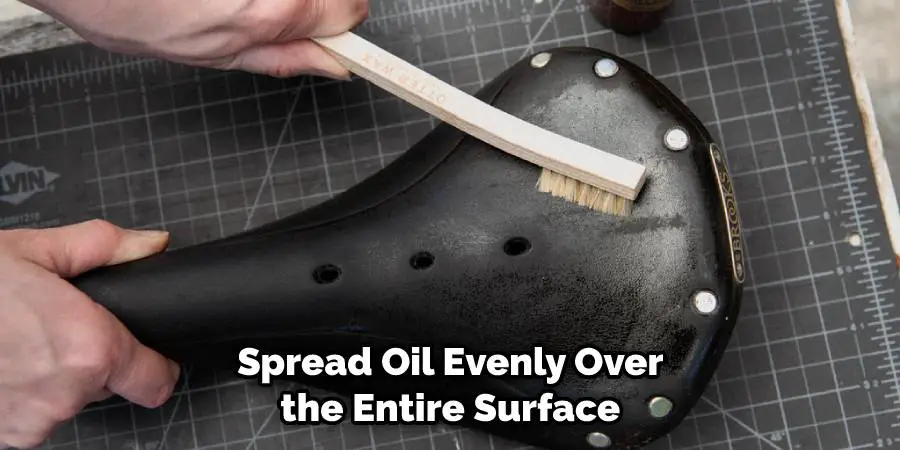
Step 2: Wipe away excess oil
Once your saddle has soaked up as much of the oil as it can, take some clean rags and wipe off any excess oil from the surface of your saddle. How thoroughly you remove the extra oil will affect how dark the leather becomes.
Step 3: Test your color
Before you go any further, take a small patch of naked leather and place it against a different part of your saddle that has been oiled. How dark the two patches are should give you a good idea of what to expect for the entire piece. How long you wait before testing your color will depend on how quickly the oil absorbs into the leather.
If you’re impatient, keep checking every fifteen minutes until it’s as dark as you want it to be. Avoid overdoing it because saddle leather can only absorb so much stain. Too much oil saturation could damage your leather by loosening its fibers and making it stretchy and prone to tearing.
Step 4: Repeat if necessary.
If your test patch isn’t dark enough or you can still see a difference in color between the oil-stained leather and the unbuffed leather, wipe away the excess oil from your test patch and apply more oil before you reapply the dye color. You’ll have to keep using dye until all of the oil is removed, so this method may take a while to complete. How much effort this is worth depends on how dark you want your saddle to become and if it’s even possible to absorb that much stain. Nevertheless, this is a crucial method in how to darken saddle leather.
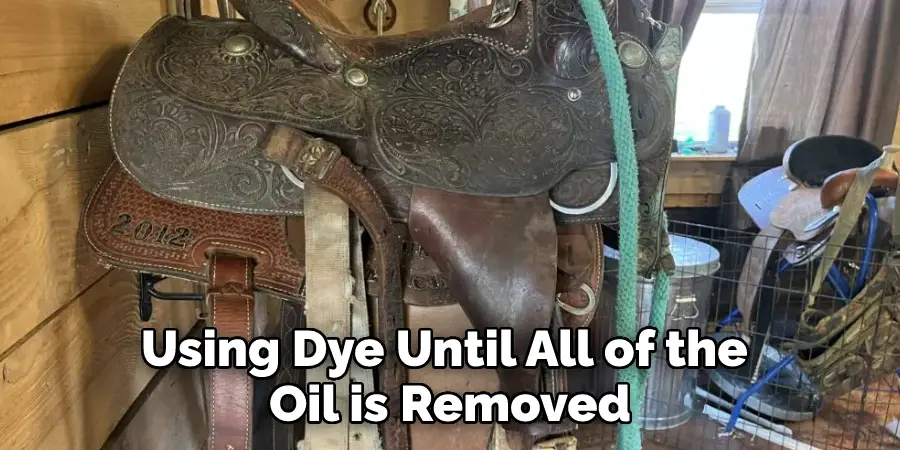
Method 2: Using Polish to Darken Saddle Leather
This method of darkening saddle leather is a lot easier and contains no oil, but it will take a while to achieve any significant color change. However, if you’re trying to get a very light-colored piece of leather to even out in color, this may be your best bet.
Things You’ll Need:
- A clean rag
- Paper towels
- Leather polish (any color)
Step 1: Apply the polish
Take a clean rag and rub some polish into the leather. How much you use will depend on how big the area you want to darken. Also, how fast or thorough you apply it will affect how well it covers no-dye areas and absorbs in your dye color. Just keep using and rubbing in the same spot until no more color change occurs and your polish begins to turn clear.
You Can Check It Out to Refleece a Saddle
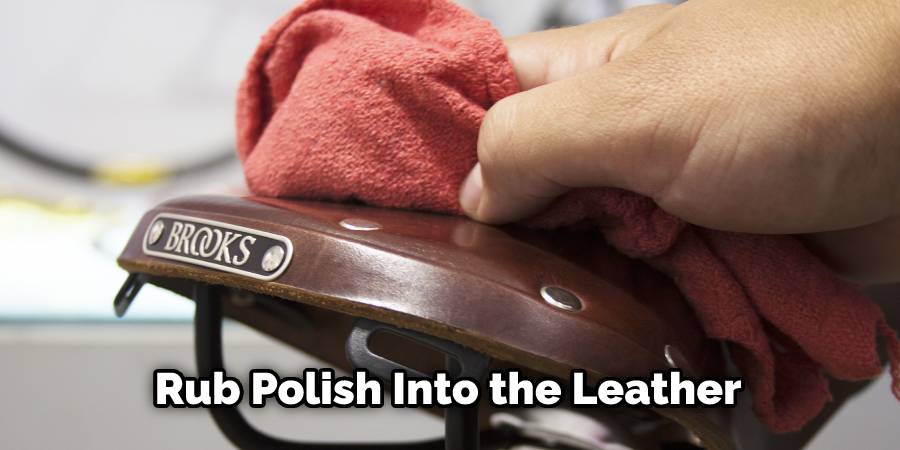
How long this takes depends on several factors. How big of an area, what kind of leather, whether or not there’s any oil already inhibiting absorption, etc. Allow the polish to dry before moving onto step two because it may cause streaks if not allowed to dry thoroughly between steps.
Step 2: Buff away excess polish
Once your polish has dried, take a clean rag or paper towel and buff away the excess to reveal an even color change. How long you have to wait for it to dry will depend on how much time is necessary for the particular type of leather you’re working with. Also, how thoroughly you remove the excess polish will affect how much dye is absorbed by the now-soaked leather.
You’ll need to apply more dye if there are any apparent patches where no color was applied. How much effort this takes depends on how dark you want your saddle to become and what kind of leather you have, but using polish is less likely to cause damage than using oil. Just be careful not to mix up the order of things because polishing after applying dye will mess up your color. How dark this method makes your leather will depend on the dye and how much it’s affected by the polish.
Method 3: Using Leather Dressing to Darken Saddle Leather
This method is much easier to do than the previous two. How dark it makes your leather depends on how long you let the dressing sit before buffing excess oil away and how much dye was absorbed by the now-soaked leather. How dark or light your saddle becomes also depends on what kind of oil is in the dressing, but vegetable oil usually works better for this than a petroleum one will.

Things You’ll Need:
- Paper towels or a clean rag
- A commercial leather conditioner or dressing (any color)
Step 1: Apply the conditioner to your leather
Take a small amount of conditioner out of its bottle and apply it directly to your leather. How much you use will depend on how many areas you want to darken and how damp you want your saddle to become. Also, how fast or thorough your application is will affect the absorption rate and subsequent color change.
Just keep applying and rubbing in the same spot until no more color change occurs and your conditioner begins to turn clear. How long this takes depends on several factors, such as what kind of leather it’s being used on, whether or not there’s any oil already inhibiting dye absorption, etc. Allow the conditioner to dry before moving on to step two because were talking about it at least a few hours before it becomes tacky to the touch.
Step 2: Buff away excess conditioner
Once your conditioner has dried (at least a few hours), take a clean rag or paper towel and buff away the excess to reveal an even color change. How long you have to wait for it to dry will depend on how much time is necessary for the particular type of leather you’re working with.
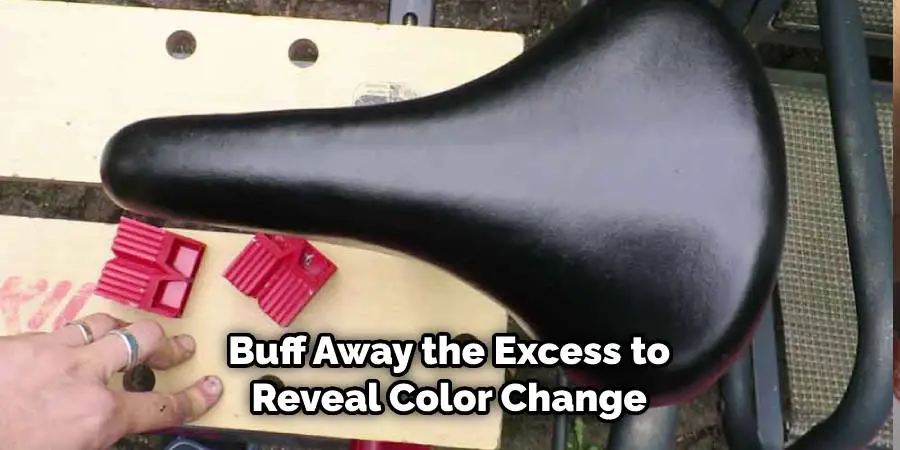
How thoroughly you remove the excess conditioner will affect how much dye is absorbed by the now-soaked leather. How dark your leather becomes depends on how much dye is soaked up and the conditioner you use. How dark this method makes your saddle will depend on the dye and how much it’s affected by the conditioner.
What Are the Main Benefits of Darkening Leather?
Darkening leather can have a number of benefits, including making it look better and more supple. It can also help preserve the material from further damage, as well as make it more durable and resistant to wear and tear. Here are some of the main benefits of darkening leather:
Improved Appearance
Darkening leather can greatly improve its overall appearance by providing a darker color and luster. This is especially useful for leather that has become faded over time through sun exposure or general wear and tear. By darkening the material, you can restore its original look and make it look better than ever before!
Increased Durability
Darkening leather also makes it stronger and more resistant to harm or damage. This is because darkening the material helps seal its natural oils, protecting it against dirt, dust, and other contaminants that could otherwise degrade or weaken the material over time. The process also helps keep out moisture which could cause cracking or rotting if left unchecked.
Greater Flexibility
Finally, darkening leather also helps increase flexibility by allowing its fibers to move around more freely while retaining their shape. This makes it less likely to break when stretched or pulled too hard and allows for better comfort when using items made from this type of material.
Frequently Asked Questions
What Oils Will Darken Leather?
It will depend on the type of leather and the specific oils used. However, some of the most common oils that darken leather include beeswax, linseed oil, and tarry oils such as blackstrap molasses.
Testing different oils on a small piece of sample leather before using them on a larger piece to avoid any potential damage or mess is important.
Can you oil a saddle to make it darker?
Not typically, no. Oiling a saddle should only be done if it is in bad condition and needs to be repaired or replaced. Doing so will not make the saddle any darker but may cause damage that is difficult to repair or replace.
Will saddle soap darken leather?
Saddle soap may darken leather but it’s not guaranteed. Some people believe that using saddle soap will cause the leather to become greasy and oily, which in turn can lead to dirt and grime sticking to the surface. In addition, some say that this type of soap is harsh on the skin and can dry out your hide. As with anything you use on your horse, test a small spot before committing to regular usage.
Does coffee darken leather?
Some people say that coffee darkened the leather jacket that was used in the test, while others claim it didn’t have any negative effects. Ultimately, if you are concerned about the damage caused by coffee stains on your leather items, you may want to avoid drinking it regularly. Instead, try using a cleaner designed specifically for cleaning dark surfaces, like espresso powder or black tea bags.

Conclusion
If you’re looking for how to darken saddle leather, you can try a few different methods. Which one will work best for your project depends on the condition and color of the leather. However, with a little bit of experimentation, you should be able to find the proper method for your needs.

